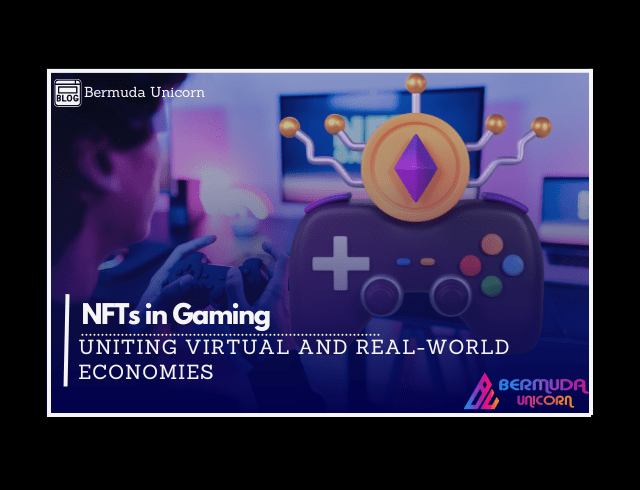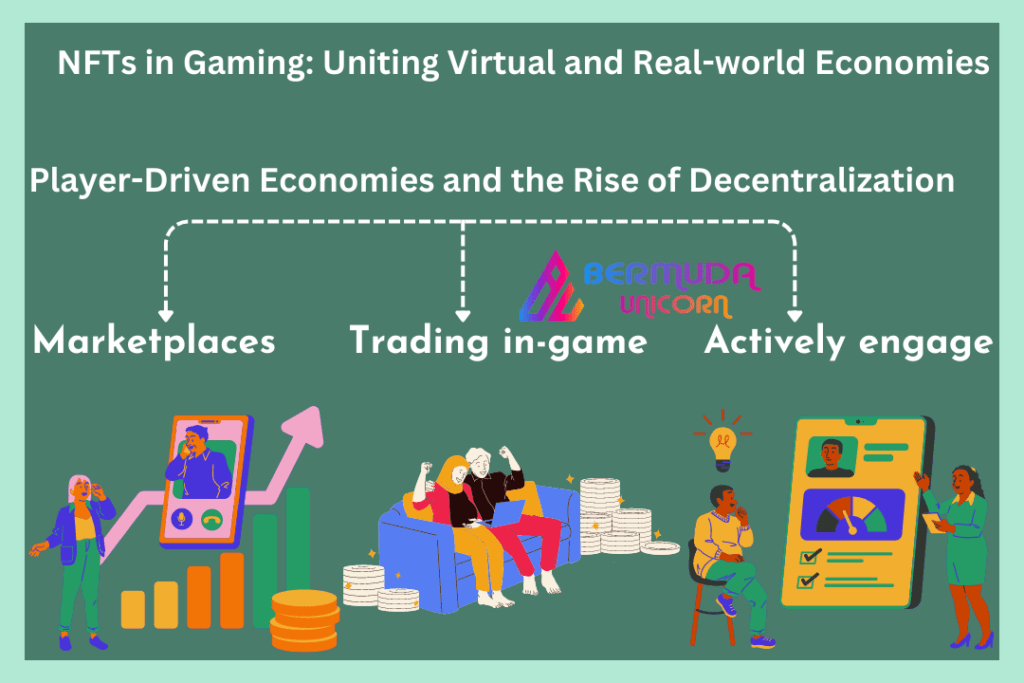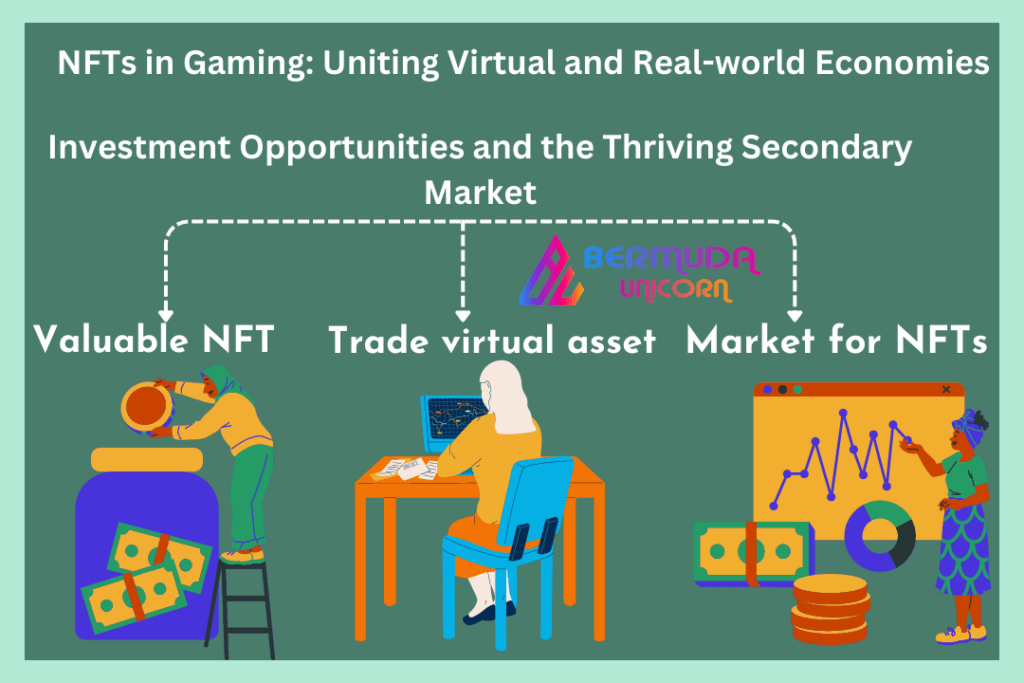![]()

Introduction:
The gaming business has undergone a shift thanks to Non-Fungible Tokens (NFTs), which connect the virtual and physical worlds. With the advent of these distinctive digital assets, a new paradigm of real ownership, player-driven economies, and decentralized ecosystems has emerged. In this article, we’ll go into great detail on how NFTs have altered the video game business by enabling gamers to gain enhanced involvement, investment choices, and direct monetization. Join us as we delve into the enormous realm of NFTs and discover the wealth of opportunities they provide to both gamers and developers.
True Ownership and Scarcity: Unlocking Value in Gaming
The capacity of NFTs to provide players with actual ownership of in-game assets is one of its core characteristics. NFTs provide a novel alternative to conventional gaming, where virtual products have no real-world worth outside of the game. Players that acquire and exchange uncommon virtual goods create scarcity and value by using each NFT to symbolize a unique digital object.
This concept of true ownership enhances player engagement and fosters a sense of value and investment in the gaming experience.
Player-Driven Economies and the Rise of Decentralization

Players now have more ability to take part in decentralized ecosystems and player-driven economies thanks to NFTs. NFTs promote the growth of player-driven marketplaces by facilitating the production, purchase, and trading of in-game assets using digital tokens. They also make peer-to-peer transactions possible. Players have more influence over their game experience because of this decentralized strategy, which also provides them more authority over the virtual worlds they live. Gamers now have exciting options to actively engage in and profit from their virtual endeavors thanks to the opportunity to monetize in-game assets and take part in an ecosystem that supports itself.
Interoperability and Cross-Game Compatibility: Expanding Possibilities
NFTs introduce interoperability, allowing players to use their virtual assets across different games and platforms. This cross-game compatibility expands the utility and value of NFTs, as players can leverage their prized items in various gaming environments. Interoperability encourages collaboration between game developers, promotes innovative gameplay experiences, and creates a more seamless and interconnected gaming ecosystem. Players can build a collection of NFTs that can be utilized across multiple games, giving them a sense of continuity and versatility.
Investment Opportunities and the Thriving Secondary Market

NFTs have opened up new investment opportunities within the gaming industry. Rare and valuable NFT items can appreciate in value over time, creating a thriving secondary market where players can buy, sell, and trade virtual assets. This introduces an additional layer of excitement and strategic decision-making for players, who can potentially earn profits through strategic acquisition and trading of NFTs. The secondary market for NFTs has created a dynamic environment where players can navigate and capitalize on emerging trends, making it an appealing avenue for investment.
Creator Empowerment and Monetization: A Direct Connection with Players
NFTs have provided game developers and creators with a direct route to monetize their creations. By selling unique in-game items or digital collectibles as NFTs, developers establish a direct connection with players, bypassing traditional intermediaries. This approach empowers developers to showcase their creativity and vision, while also generating additional revenue streams. NFTs create a symbiotic relationship between developers and players, enabling a more direct and mutually beneficial exchange.
The Future of Gaming and NFTs: Expanding Possibilities
Even more, opportunities are ahead as NFTs continue to take off in the gaming sector. The use of NFTs in game production will likely rise as designers use these digital assets to improve gameplay, recognize user accomplishments, and provide new kinds of interactive experiences. NFTs may also make it possible for gamers to effortlessly use their virtual assets on other gaming systems, enabling cross-platform interoperability. NFTs with cutting-edge technology like virtual reality (VR) and augmented reality (AR) may combine to create games that are even more immersive and revolutionary.
Conclusion
From pixels to profits, NFTs have revolutionized the gaming industry by merging virtual and real-world economies. The introduction of true ownership, player-driven economies, cross-game compatibility, investment opportunities, and direct monetization has transformed the gaming landscape. NFTs have empowered players to have a stake in the virtual worlds they inhabit, while also opening up avenues for investment and financial gains. Furthermore, NFTs have given game developers the tools to unleash their creativity and directly engage with their audience. As the NFT market continues to evolve, we can expect even more innovations, collaborations, and economic potential within the gaming industry. NFTs have unlocked a world of opportunities for players, developers, and the gaming community at large, creating a more immersive, decentralized, and dynamic gaming ecosystem.
